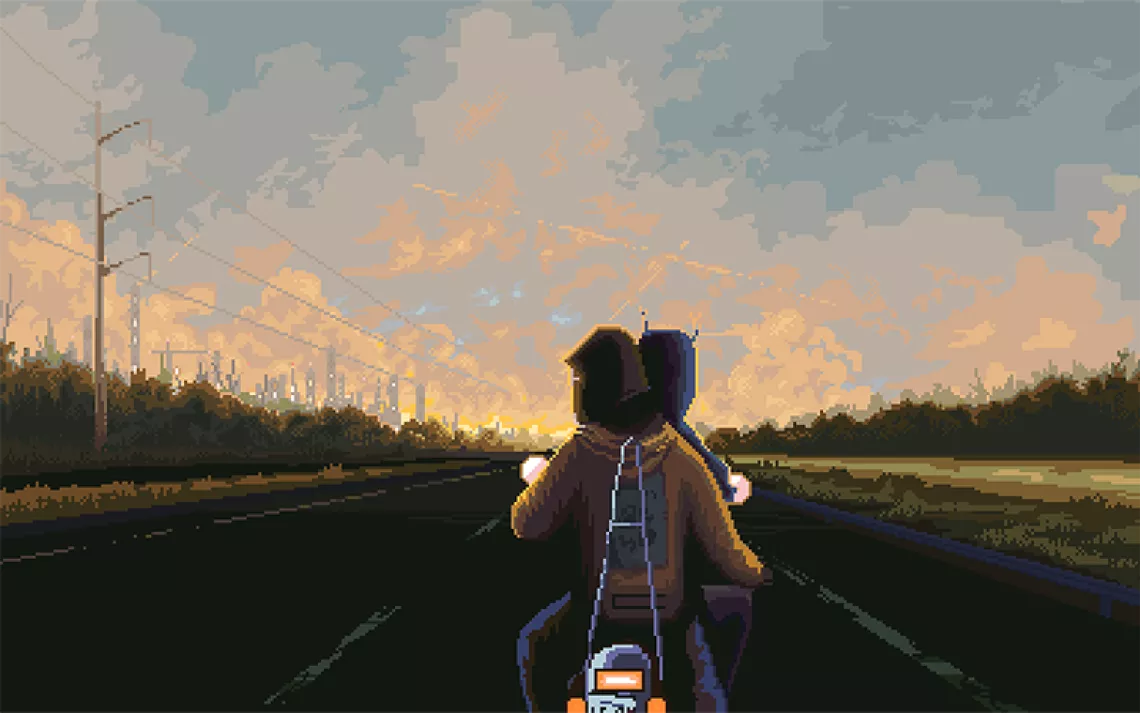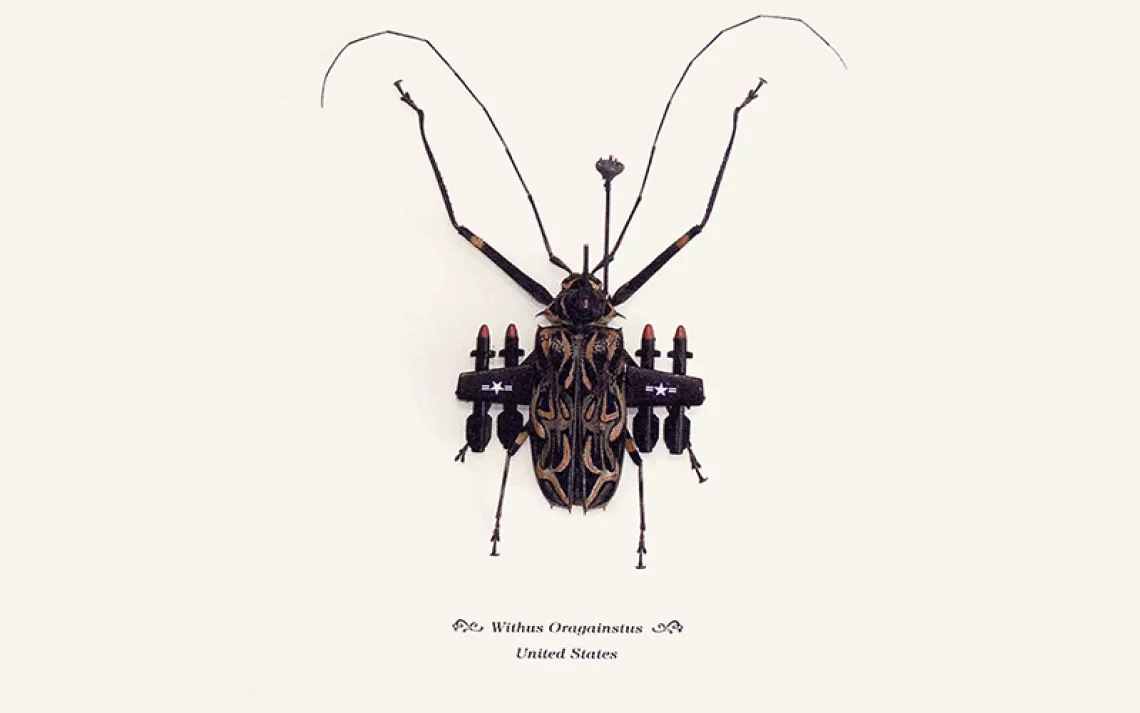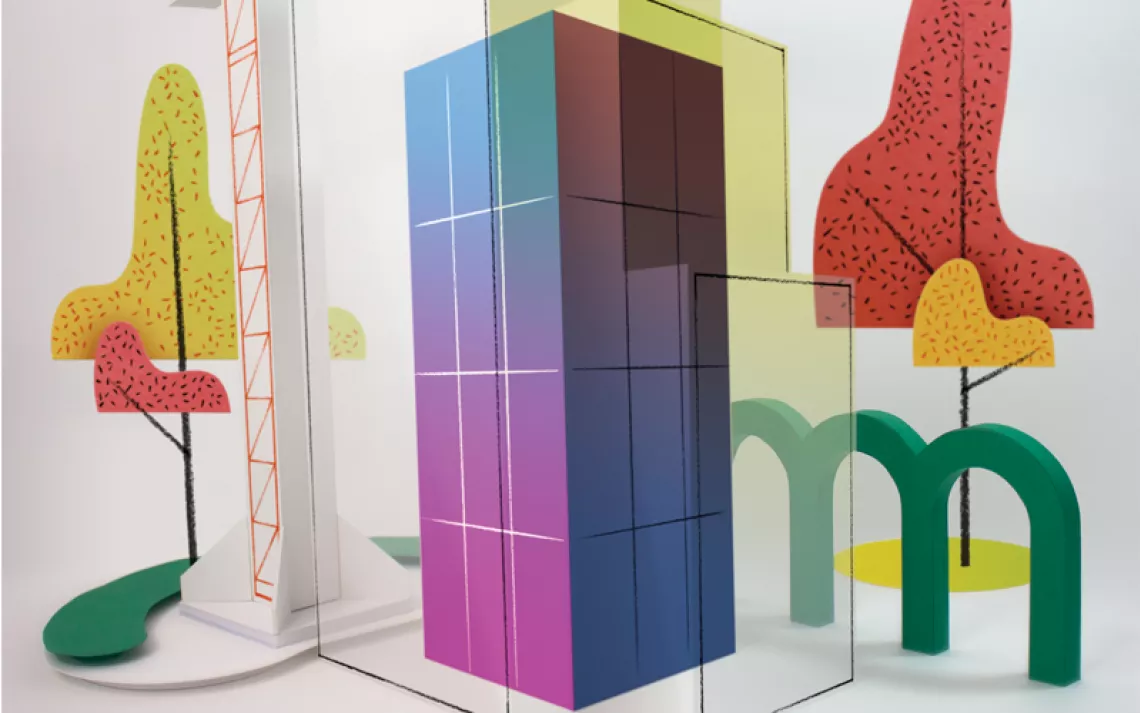Turning Air Pollution Into Art? Yes, It's a Thing
Meet Air-Ink, environmentally minded artists’ new best friend

Artist Kristopher Ho's latest mural-in-progress, made possible through Air-Ink. | Courtesy of Kristopher Ho
Cars release about 20 percent of the entire world’s quota of planet-frying carbon dioxide, and we breathe in an average of two gallons of that polluted air a minute. Luckily, one group of friends figured out a way to turn something horrible into something creative.
Within the walls of the MIT Media Lab in Boston, Anirudh Sharma and Nikhil Kaushik invented Air-Ink, a professional art supply made directly from car exhaust and soot. Since they officially began “capturing” pollution in June 2016, Sharma, Kaushik, and the rest of their team at Graviky Labs have cleaned 1.6 trillion liters of air.
But seriously, how?
The Graviky team created the Kaalink, a unit that captures soot before it’s unleashed into the atmosphere. Next, they recycle quarantined pollutants into ink in their lab, removing heavy metals and carcinogens in the process. The remaining, carbon-based pigment then becomes Air-Ink—a product that artists around the world are embracing.
 Courtesy of Graviky Labs
Courtesy of Graviky Labs
“It’s definitely an interesting approach when you take something from the street—in this case air pollution—and turn it into something useful and put it back into the streets,” says Kristopher Ho, a Hong Kong–based mural artist who’s used Air-Ink since July 2016. “In a way, it’s like a cycle.”
Ho resides in one of the world’s most populated, dense, and environmentally unfriendly cities—one where many people wear masks every day to protect themselves from polluted air. Ho says Air-Ink lends his social-justice-oriented murals even more importance.
“Everyone is familiar with pollution surrounding us, but not many of us have had creative ideas to turn this into something useful,” he says. “Whenever I use Air-Ink, I’m like, ‘God, this is what we are breathing in every day?’”
Dibarah Mahboob, a self-taught artist currently working with Doctors Without Borders in Jordan, connected with Sharma after seeing an intriguing Facebook post about Air-Ink. “We’re both originally from South Asia, where air pollution and traffic are massive problems,” Mahboob says. “And as someone with a natural humanitarian instinct, I wanted to take this initiative forward for a project—one that could merge the power of art with a social cause.”
Hence, Mahboob’s present plans to create a mural using Air-Ink in her hometown of Dhaka, Bangladesh, to help make widespread the notion of “environmental art.”
“The more Air-Ink we use, the less pollution we breathe—simple,” she says.

Courtesy of Dibarah Mahboob
Air-Ink and activist-minded artists are a natural fit. After all, Graviky Labs’ product is best suited for murals—which are arguably the most effective medium to get a message across. Luckily, it’s also user-friendly.
“Air-Ink is much thicker ink, so it’s pretty ideal for filling porous surfaces,” Ho says. “The color is solid black and doesn’t drip as often, from my experience, as some other ink.”
With air pollution affecting billions every day, small contributions to prevent or limit it may amount to only a step forward. But when an artist plasters the problem in the public’s face, things are bound to get done.
One point for art. Pollution, you’re going down.
 The Magazine of The Sierra Club
The Magazine of The Sierra Club



